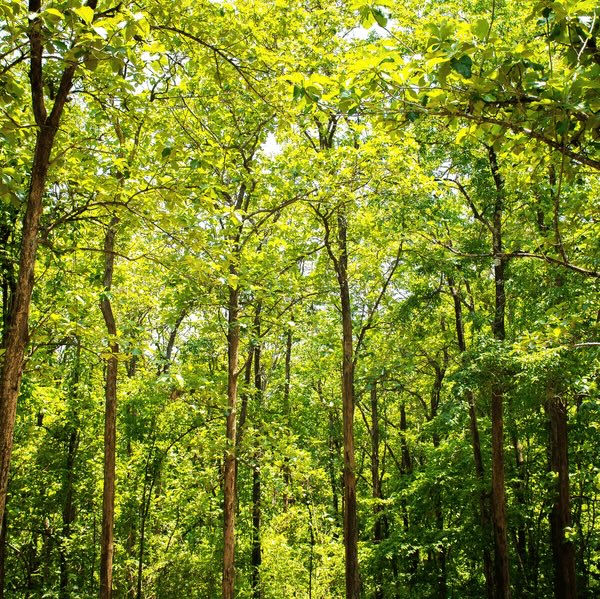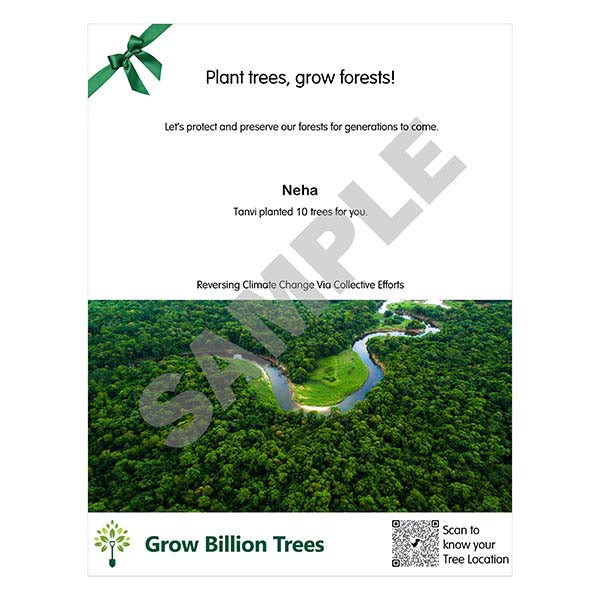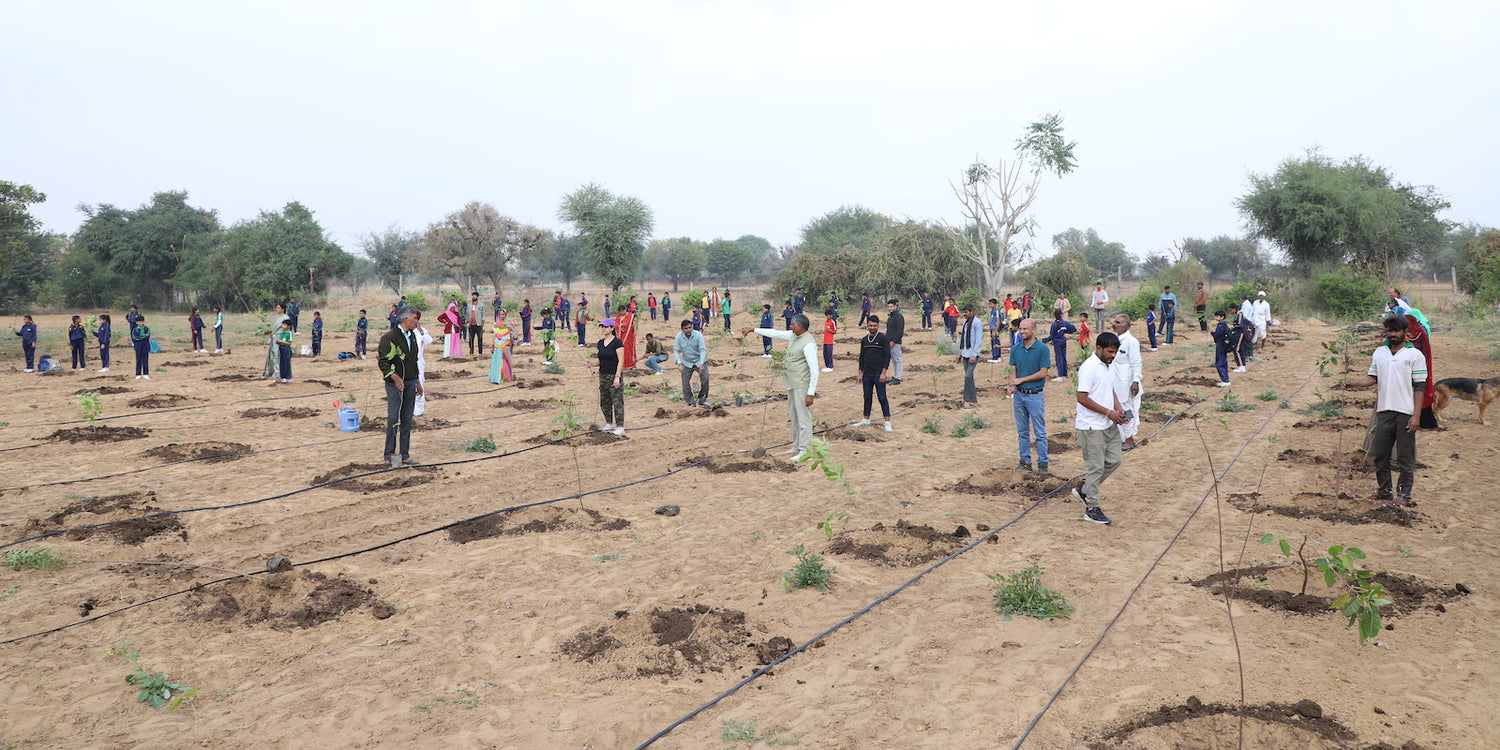Trees for Forest
Trees for Forest
🌳 2-3ft Tree + 3 Years Nurturing + Geo-Tagged
💡 Tip: 10 Trees for 10 Years of Association
100 Trees for Forests
Couldn't load pickup availability
What you get ?
Tree(s) Plantation
Tree(s) Plantation
A tree(s) native to the region will be planted within 7 -10 days, and post-plantation monitoring will be thoroughly managed.
*You will receive an email/whatsapp notification immediately after the tree(s) plantation. or you can check the current status by logging into "My Account" anytime.
e-Greeting Card of Tree(s) Plantation for Gifting
e-Greeting Card of Tree(s) Plantation for Gifting
If you want to gift these tree(s) to your loved ones, You can generate an e-Greeting card for tree(s) plantation by logging into "My Account" after placing order.
*Please generate it within 5 days of placing the order.
e-Certificate of Tree(s) Plantation
e-Certificate of Tree(s) Plantation
A e-certificate of Tree(s) Plantation with the project details will be issued in your name after tree(s) plantation.
*You can download it from "My Account".
Geotag of your Tree(s)
Geotag of your Tree(s)
You can immediately track the live location of the project chosen for your tree(s) plantation, by logging into "My Account" or, by scanning the QR code on the certificate.
*You can see Your Name in respective Project/Forest.
If you want to gift these tree(s) to your loved ones, You can generate an e-Greeting card for tree(s) plantation by logging into "My Account" after placing order.
View full details


Tree plantation is crucial for both environmental and social sustainability. Trees play a vital role in absorbing carbon dioxide and prod Read more
Trending
Plant Trees for Forest Restoration - Reforestation Initiative
Description:
Tree plantation is crucial for both environmental and social sustainability. Trees play a vital role in absorbing carbon dioxide and producing oxygen, thereby reducing greenhouse gas levels and improving air quality.
In addition, they prevent soil erosion and provide crucial habitats for wildlife. Furthermore, trees can offer various resources, such as timber and fruit, which can create job opportunities and contribute to poverty reduction.
Planting trees also have positive impacts on communities, including improved health outcomes, increased community involvement, and education opportunities.
In conclusion, planting trees is a simple yet highly effective way to create a healthier environment and a better future for all.
Scope:
- Enhancement of Biodiversity
- Increase in Green Cover
- Reduction of Man-Animal Conflict
- Generation of Rural Employment
- Improvement of Wildlife Habitats
Tree Species:
The species of trees that are planted depend on the project, and they are chosen based on their native habitat in the corresponding ecological zone.
Why trees?
Tree plantation is essential for various reasons, including:
-
Reducing greenhouse gases: Trees absorb carbon dioxide and produce oxygen, thus reducing the levels of carbon dioxide in the atmosphere.
-
Preventing soil erosion: Trees help to stabilize the soil, reducing the risk of erosion, especially during heavy rains.
-
Providing habitat for wildlife: Trees provide shelter and food for many animals and insects.
-
Improving air quality: Trees absorb pollutants from the air, improving the quality of the air we breathe.
-
Enhancing beauty: Trees can beautify landscapes and provide shade, making outdoor spaces more pleasant and enjoyable.
-
Providing resources: Trees can provide us with essential resources such as timber, fruit, and non-timber forest products.
Social Impact:
The social impact of tree plantation can be significant, including:
-
Job creation: Tree plantations can create employment opportunities, especially in rural areas.
-
Improved health: Trees can enhance the quality of air and provide shade, leading to better health outcomes for local communities.
-
Increased community involvement: Tree plantation can bring communities together and promote a sense of ownership and responsibility for the environment.
-
Improved education: Tree plantation can be used as a tool for education, promoting awareness about the importance of trees and the environment.
-
Enhanced quality of life: Trees can provide aesthetic, recreational, and environmental benefits, improving the overall quality of life in communities.
-
Reduced poverty: Tree plantations can provide income-generating opportunities, such as the sale of timber and non-timber forest products, which can help to reduce poverty.
Most Popular
Impact of your Tree
-
Releases Oxygen
A mature tree produces around 120 kilograms of oxygen per year, which is sufficient for one human per year.
-
Reduces Air Pollution
A tree absorbs harmful gases like CO2, NO2 released by factories and vehicles, which can have serious health problems for us
-
Removes CO2
A Tree removes 22 KGs of CO2 from atmosphere per year, which is equivalent to the CO2 realeased by a human in 10 days.
-
Cooling Effect
A Tree generates cooling effect of around 10 room size ACs by providing shade and through a process of transpiration.
Special Plantations
FAQ
How much does it cost to plant a tree for Forests?
Planting trees is important for forests because it helps in increasing the forest cover, enhances biodiversity, reduces soil erosion, and helps in restoring degraded forests.
What are the benefits of planting trees in forests?
Planting trees in forests has several benefits such as improving soil quality, enhancing air and water quality, providing habitats for wildlife, increasing carbon sequestration, and mitigating the effects of climate change.
Who is responsible for planting trees in forests?
Forestry departments and forest conservation organizations are responsible for planting trees in forests. However, individuals and communities can also contribute to this effort through voluntary tree planting programs.
What types of trees are best for planting in forests?
The types of trees best for planting in forests depend on the specific location and ecological conditions of the forest. Generally, native tree species are preferred because they are better adapted to the local environment and provide habitat for local wildlife.
How can I get involved in planting trees in forests?
You can get involved in planting trees in forests by volunteering with local forestry departments or forest conservation organizations, participating in tree planting events, or organizing your own tree planting initiative.
What are some challenges in planting trees in forests?
Some of the challenges in planting trees in forests include selecting the appropriate tree species, ensuring the survival and growth of planted trees, managing competing vegetation, and protecting trees from wildlife and human disturbances.
How many trees should be planted in a forest?
The number of trees to be planted in a forest depends on the size of the forest and the specific objectives of the tree planting initiative. It is important to balance the number of trees planted with the capacity of the ecosystem to support them.
What is the role of community involvement in planting trees in forests?
Community involvement is important in planting trees in forests because it helps in creating a sense of ownership and responsibility towards the forest. It also helps in ensuring the sustainability of the planted trees by providing local knowledge and support.
What is the impact of climate change on tree planting in forests?
Climate change can affect the success of tree planting in forests by altering temperature, precipitation, and other environmental factors that influence tree growth and survival. Climate change adaptation measures, such as selecting appropriate tree species and planting techniques, may be necessary to ensure the success of tree planting initiatives.
How can tree planting in forests contribute to sustainable development?
Tree planting in forests can contribute to sustainable development by providing economic benefits such as timber and non-timber forest products, while also enhancing ecological and social benefits such as biodiversity conservation, watershed protection, and recreational opportunities.
What are the potential negative impacts of planting trees in forests?
Potential negative impacts of planting trees in forests include altering the composition and structure of natural forests, displacing native species, and reducing the availability of resources for local communities. Therefore, it is important to carefully consider the potential impacts of tree planting initiatives.
How long does it take for planted trees to grow in forests?
The time it takes for planted trees to grow in forests depends on several factors such as the species of the tree, the environmental conditions, and the planting techniques used. Generally, it can take several years for planted trees to establish and grow.
How does tree planting in forests contribute to biodiversity conservation?
Tree planting in forests can contribute to biodiversity conservation by providing habitat for a variety of species, including birds, mammals, and insects. It can also help in restoring degraded habitats and increasing the overall diversity of forest ecosystems.
What is the cost of planting trees in forests?
The cost of planting trees in forests varies depending on several factors such as the size of the area, the type of tree species used, and the planting techniques employed. It is important to consider the long-term benefits
Can I personalize the tree?
Yes, you can personalize the gift of a tree via a certificate and a personalized greeting card with the gift.
Can I choose where the tree is planted?
No, tree plantation happens in bulk in forest with capacity of 10,000 or more plants. location is chosen based availability.
How much does it cost to plant a tree for employees?
The cost of planting a tree start at Rs 99. It can vary depending on the tree species, size, and where it is located.




















